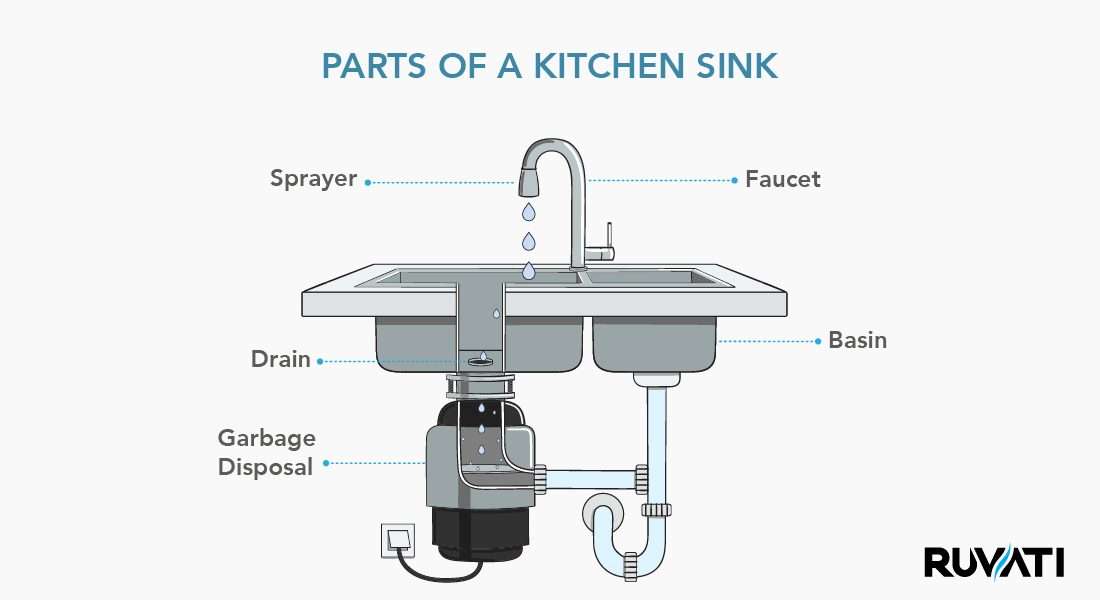Kitchen sink plumbing is a critical aspect of any functional kitchen, ensuring proper drainage and preventing leaks or backups. Understanding the basics of kitchen sink plumbing, from the pipes under the sink to the disposal system, can empower you to troubleshoot minor issues and make informed decisions when hiring a professional. This guide will walk you through the various components, common problems, and best practices for maintaining a healthy kitchen sink plumbing system. We’ll also explore some frequently asked questions to help you navigate the complexities of this essential household system.
Understanding the Components of Kitchen Sink Plumbing
The plumbing under your kitchen sink is a complex network of pipes and fittings designed to efficiently drain wastewater. Here’s a breakdown of the key components:
- Drain Pipes: These pipes carry wastewater away from the sink. They are typically made of PVC or ABS plastic.
- P-Trap: This U-shaped pipe traps debris and prevents sewer gases from entering your home.
- Tailpiece: The tailpiece connects the sink drain to the P-trap.
- Drain Basket: The drain basket sits inside the sink drain and catches larger food particles.
- Garbage Disposal (Optional): If you have a garbage disposal, it connects to the sink drain and grinds food waste.
- Air Admittance Valve (AAV): This valve allows air to enter the drainpipe, preventing a vacuum that can slow down drainage.
Common Plumbing Configurations
Different kitchen setups may require different plumbing configurations. Here’s a look at some typical setups:
| Configuration | Description |
|---|---|
| Single Sink with Disposal | Features a drain connected to a disposal, which then connects to the P-trap and drainpipe. |
| Double Sink with Disposal | Includes two drains, often with a disposal on one side. A central waste pipe connects both drains to the P-trap. |
| Single Sink without Disposal | A simple setup with a drain directly connected to the P-trap and drainpipe. |
| Double Sink without Disposal | Two drains connected to a central waste pipe, which then connects to the P-trap and drainpipe. |
Troubleshooting Common Kitchen Sink Plumbing Problems
From slow drains to leaks, kitchen sink plumbing can experience a range of issues. Identifying the problem early can save you time and money on repairs.
- Slow Drain: Often caused by a clog in the P-trap or drainpipe. Try using a plunger or drain snake to clear the blockage.
- Leaky Pipes: Check for leaks around pipe connections, especially at the P-trap and tailpiece. Tighten connections or replace worn-out parts.
- Garbage Disposal Issues: A jammed garbage disposal can be caused by hard objects or excessive food waste. Consult your disposal’s manual for troubleshooting steps.
- Foul Odors: This can indicate a buildup of food particles in the drain or a problem with the P-trap. Clean the drain with baking soda and vinegar, or flush the P-trap with water.
Preventative Maintenance Tips
Regular maintenance can help prevent many common plumbing problems. Consider these preventative measures:
- Flush with Hot Water: Regularly flush your drain with hot water to help prevent grease buildup.
- Avoid Pouring Grease Down the Drain: Grease solidifies in the pipes and can cause clogs.
- Use a Drain Strainer: A drain strainer catches food particles and other debris, preventing them from entering the drainpipe.
- Regularly Clean the P-Trap: Cleaning the P-trap removes accumulated debris and helps prevent clogs and odors.
FAQ: Kitchen Sink Plumbing
Here are some frequently asked questions about kitchen sink plumbing:
- How often should I clean my P-trap? It’s a good idea to clean your P-trap every 6-12 months, or more frequently if you notice slow drainage or foul odors.
- What should I do if my garbage disposal is jammed? Turn off the power to the disposal, use tongs to remove any visible obstructions, and then press the reset button on the bottom of the unit.
- Can I use chemical drain cleaners? While chemical drain cleaners can be effective, they can also damage your pipes and are harmful to the environment. Consider using natural alternatives like baking soda and vinegar.
- When should I call a plumber? If you’re unable to resolve a plumbing issue yourself, or if you suspect a major problem like a broken pipe, it’s best to call a qualified plumber.
- What type of pipe is best for kitchen sink plumbing? PVC and ABS are common and cost-effective options. Copper is more durable but also more expensive.
Understanding your kitchen sink plumbing empowers you to address minor issues and maintain a healthy system. By knowing the components, recognizing potential problems, and implementing preventative measures, you can avoid costly repairs and ensure your kitchen remains a functional and enjoyable space. Remember to exercise caution when working with plumbing, and don’t hesitate to consult a professional when needed. Regular maintenance and timely repairs are crucial for preserving the integrity of your plumbing system and preventing long-term damage. Investing a little time in understanding your kitchen sink plumbing can save you significant headaches and expenses in the future. So take the time to learn, observe, and maintain your system – it will pay off in the long run.

